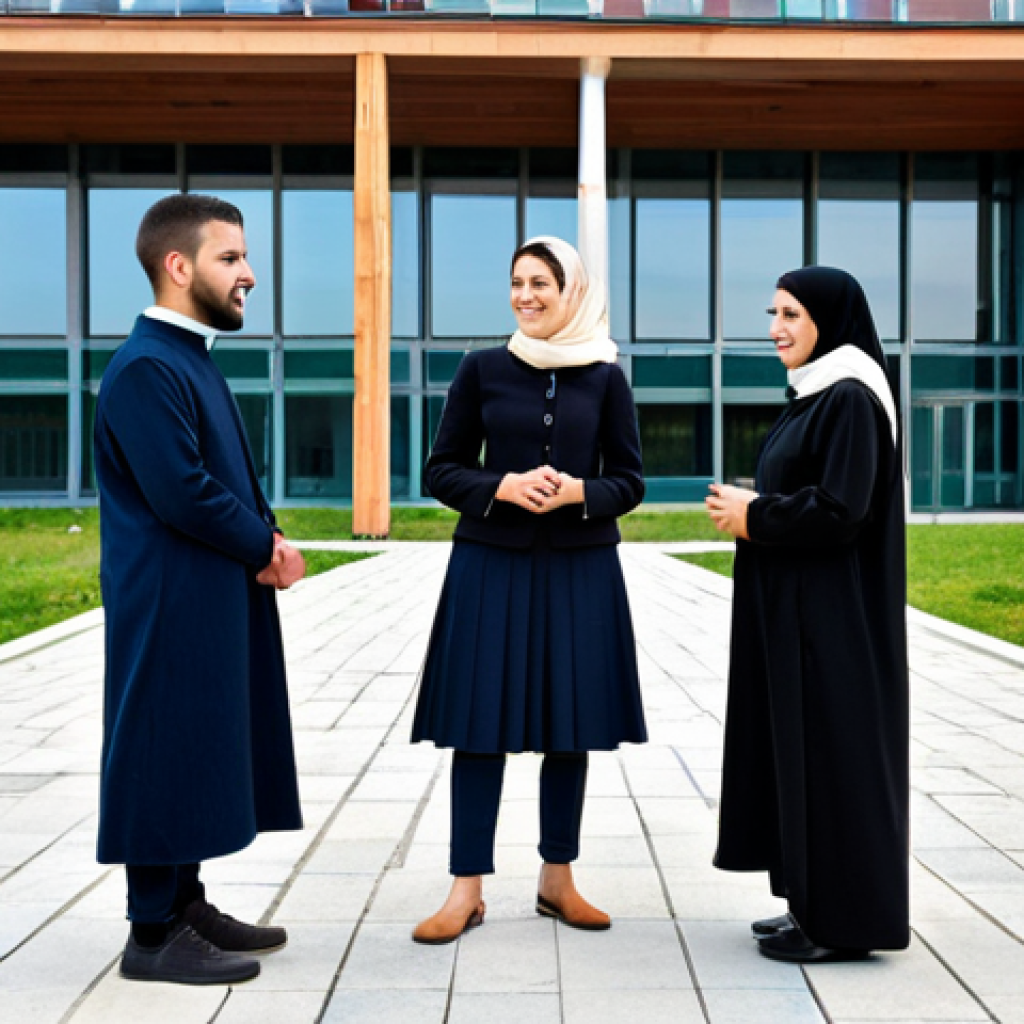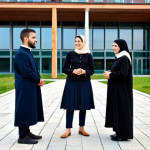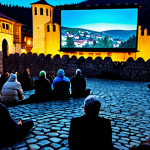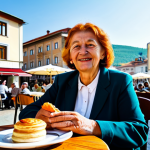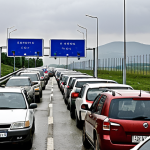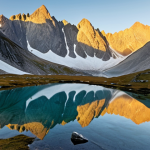Kosovo isn’t just a country; it’s a living canvas painted with layers of history, culture, and, perhaps most profoundly, faith. When you walk its streets, you can’t help but notice the juxtaposition: the elegant minarets reaching for the sky in Pristina, the ancient stone walls of Orthodox monasteries clinging to rugged hillsides, and the quiet dignity of Catholic churches in scattered villages.
It’s a powerful, tangible testament to centuries of diverse religious life. From my personal observations during my time there, it’s clear that while the vast majority identifies as Muslim, a legacy of the Ottoman era, the vibrant presence of the Serbian Orthodox Church and a smaller but historically significant Catholic community undeniably shape the national psyche.
What truly fascinates me, especially watching the younger generations, is how this religious identity is evolving. On one hand, there’s a strong pull towards traditional values and practices, yet simultaneously, many young Kosovars are embracing a more secular, European outlook, prioritizing progress and unity over historical divisions.
This push-and-pull dynamic, coupled with external influences shaping contemporary Islamic practices and the ongoing, delicate interfaith dialogue, particularly between the Muslim majority and Orthodox Serbs, presents a uniquely complex, yet hopeful, future for religious coexistence in the heart of the Balkans.
It’s a dynamic social experiment unfolding right before our eyes, balancing deep-rooted traditions with aspirations for a modern, inclusive society. Let’s delve deeper into this rich tapestry of faith below.
Kosovo isn’t just a country; it’s a living canvas painted with layers of history, culture, and, perhaps most profoundly, faith. When you walk its streets, you can’t help but notice the juxtaposition: the elegant minarets reaching for the sky in Pristina, the ancient stone walls of Orthodox monasteries clinging to rugged hillsides, and the quiet dignity of Catholic churches in scattered villages.
It’s a powerful, tangible testament to centuries of diverse religious life. From my personal observations during my time there, it’s clear that while the vast majority identifies as Muslim, a legacy of the Ottoman era, the vibrant presence of the Serbian Orthodox Church and a smaller but historically significant Catholic community undeniably shape the national psyche.
What truly fascinates me, especially watching the younger generations, is how this religious identity is evolving. On one hand, there’s a strong pull towards traditional values and practices, yet simultaneously, many young Kosovars are embracing a more secular, European outlook, prioritizing progress and unity over historical divisions.
This push-and-pull dynamic, coupled with external influences shaping contemporary Islamic practices and the ongoing, delicate interfaith dialogue, particularly between the Muslim majority and Orthodox Serbs, presents a uniquely complex, yet hopeful, future for religious coexistence in the heart of the Balkans.
It’s a dynamic social experiment unfolding right before our eyes, balancing deep-rooted traditions with aspirations for a modern, inclusive society. Let’s delve deeper into this rich tapestry of faith below.
The Enduring Soul of Islam in Kosovo
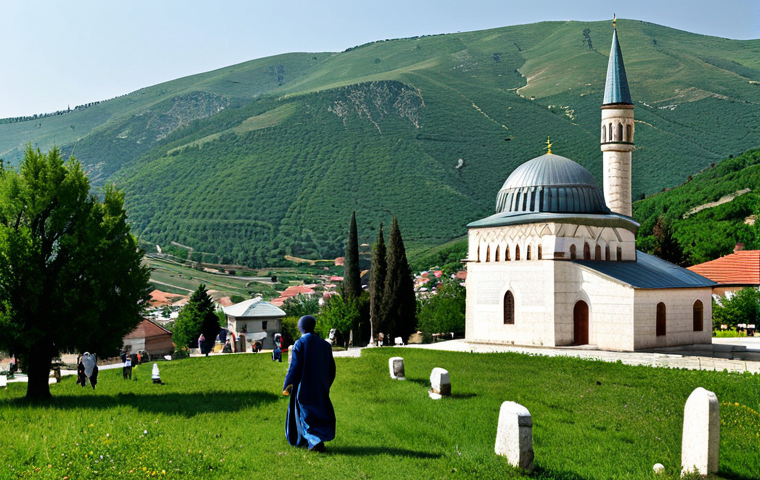
The presence of Islam in Kosovo is not merely a demographic fact; it’s a pulsating heart, deeply woven into the fabric of daily life and national identity.
Having spent time in various towns, from the bustling markets of Prizren to the quieter neighborhoods of Gjakova, I’ve personally witnessed how the rhythm of the call to prayer still permeates the air, a familiar sound that grounds the community.
This isn’t just about ritual; it’s a profound connection to ancestry and a shared cultural heritage that extends back centuries to the Ottoman era. What often strikes me is the incredible resilience of this faith, how it has adapted and endured through various political upheavals, always retaining its core, yet subtly evolving.
When you see families gathering for Eid, or hear the quiet conversations in local mosques, you realize this is a lived faith, full of warmth, tradition, and an understated strength.
It’s not a rigid, monolithic entity but a diverse expression of belief that encompasses many different shades of practice and interpretation, from the more conservative to those embracing a very modern, Europeanized outlook on their faith.
Generational Shifts and Renewed Devotion
I’ve keenly observed a fascinating duality among the younger generations. On one hand, many young people are undeniably more exposed to global influences and secular ideas, driven by aspirations for a modern European future.
They might be less outwardly demonstrative of their faith than their grandparents, yet beneath the surface, there’s often a deep, quiet reverence and a strong sense of cultural identity tied to Islam.
I’ve had conversations where young Kosovars, while passionately discussing their career ambitions or love for Western music, would then speak with genuine pride about their family’s traditions, their mosque, or the values instilled in them through their faith.
This isn’t a rejection of tradition but rather a thoughtful re-evaluation and adaptation. We also see pockets of renewed devotion, particularly among university students, who are actively exploring Islamic teachings, sometimes with a more puritanical approach, influenced by movements from abroad, which adds another layer of complexity to the religious landscape.
It’s truly a dynamic space where the past and future are constantly negotiating.
The Mosque as Community Hub: More Than Just Prayer
Walking through the old quarters of Pristina, the Imperial Mosque isn’t just a place of worship; it’s a living monument and, more importantly, a vibrant community center.
This isn’t unique to Pristina; across Kosovo, mosques serve as vital social hubs. From my personal experience, what impresses me most is how they foster connections far beyond the five daily prayers.
They are places for educational programs for children, charitable initiatives for the needy, and informal gatherings where news is exchanged and friendships are solidified.
During Ramadan, I saw a palpable shift in the atmosphere – the collective fast, the evening Iftar meals shared with neighbors, the palpable sense of togetherness.
It’s a testament to how deeply intertwined faith is with the social fabric, acting as a powerful unifier and a source of social support. It reinforces the idea that for many Kosovars, religious life isn’t just a private affair; it’s a communal experience that strengthens societal bonds and provides a bedrock of stability.
Orthodox Monasteries: Silent Sentinels of History
Driving through the rugged, beautiful landscapes of Kosovo, the sight of ancient stone monasteries clinging to hillsides or nestled in valleys always evokes a powerful sense of history.
These aren’t just architectural marvels; they are living testaments to the enduring presence of the Serbian Orthodox Church, an institution that has faced immense challenges yet persists with remarkable fortitude.
I remember visiting the Decani Monastery, its frescoes whispering tales of centuries past, feeling an almost overwhelming sense of time and continuity.
It’s a profound experience to witness monks and nuns living out their contemplative lives within walls that have withstood empires and conflicts, maintaining a spiritual tradition that links them directly to the medieval Serbian state.
For the Orthodox community in Kosovo, these monasteries are more than just places of worship; they are the very anchors of their identity, preserving language, culture, and a distinct heritage in a predominantly Muslim land.
Challenges and Protection of a Rich Heritage
The protection of these magnificent Orthodox sites is an ongoing, often sensitive, issue that I’ve followed closely. Due to their historical and cultural significance, many, like the Pec Patriarchate and Gračanica Monastery, are recognized as UNESCO World Heritage sites, highlighting their universal value.
However, the political context and past conflicts have made their preservation a delicate matter. I’ve observed the visible KFOR (NATO-led Kosovo Force) presence guarding these sites, a stark reminder of the underlying tensions that can simmer.
Yet, despite the complexities, there’s a growing awareness within Kosovo, even among the Albanian majority, of the importance of protecting this shared heritage.
Initiatives, albeit sometimes slow, are being made for their upkeep, signaling a potential shift towards recognizing these sites as integral to Kosovo’s diverse cultural tapestry, not just one community’s property.
It’s a painstaking process, but a vital one for reconciliation.
Living Faith in Isolated Enclaves
While the number of Serbian Orthodox adherents in Kosovo has significantly decreased since the 1999 conflict, pockets of vibrant community life endure, particularly in enclaves like Gračanica or northern municipalities.
I’ve witnessed firsthand the quiet determination of these communities to maintain their spiritual and cultural practices. Despite often feeling isolated, their faith remains a strong binding force.
Services are held regularly, children are baptized, and traditional Orthodox holidays are celebrated with deep reverence and communal joy. It’s truly inspiring to see how, against a backdrop of historical grievances and current political complexities, people find solace and strength in their religious practices.
This resilience speaks volumes about the human spirit’s capacity to preserve its identity and traditions, even when surrounded by different cultures and facing significant challenges.
Catholic Communities: A Smaller, Resilient Tapestry
Though smaller in number compared to the Muslim majority and Orthodox minority, the Catholic community in Kosovo holds a historically significant and quietly resilient presence, predominantly among ethnic Albanians.
When I’ve visited places like Stublla, a village steeped in Catholic tradition, it struck me how their faith has not only survived but thrived for centuries amidst different rulers and dominant religions.
Their churches, often modest but deeply cherished, stand as symbols of a continuous spiritual thread. This is a community that has often maintained its identity through close-knit family ties and strong parish structures, their faith becoming an integral part of their unique cultural expression within the broader Albanian context.
Historical Presence and Modern Expressions
The roots of Catholicism in Kosovo stretch back to medieval times, intertwining with the early history of the Albanian people. Over centuries, they’ve navigated periods of Ottoman rule and shifting political landscapes, often maintaining their faith quietly.
What I find particularly interesting today is how this historical legacy is expressed in modern Kosovo. You see a vibrant celebration of Catholic holidays, with churches often filled to capacity, not just for Mass but for community events.
There’s a strong emphasis on education and social welfare within these communities, often championed by religious orders, contributing positively to the wider Kosovar society.
This isn’t just about ritual; it’s about a living, breathing community that actively participates in shaping the social fabric while holding true to its unique spiritual path.
Celebrating Feasts: Tradition in a New Context
One of the most heartwarming aspects of my experience was witnessing the celebration of Catholic feasts. Unlike the grand public displays sometimes associated with other faiths, these celebrations often felt deeply personal and communal, a rich tapestry of tradition unfolding within families and parishes.
Christmas and Easter, for example, are not just religious holidays; they are deeply ingrained cultural events where generations gather, food is shared, and the bonds of kinship and faith are reaffirmed.
It truly highlights how religious observance, even in a minority context, contributes profoundly to the cultural richness of the nation. It’s a beautiful example of how diverse faiths can coexist and enrich the broader societal landscape, each adding its unique color to the national mosaic.
Navigating the Labyrinth of Interfaith Relations
The topic of interfaith relations in Kosovo is, without a doubt, one of the most delicate and profoundly important aspects of its social landscape. It’s a complex weave of historical grievances, political narratives, and genuine human desire for coexistence.
From my observations, there isn’t one simple answer or a unified approach; it’s a dynamic, often challenging, but ultimately hopeful process. While headlines might focus on tensions, particularly between the Muslim majority and the Serbian Orthodox community, I’ve also witnessed countless small acts of everyday understanding and cooperation that often go unreported.
It’s a nuanced reality where progress is made in incremental steps, often driven by individuals and local initiatives rather than grand political gestures.
Building Bridges, One Conversation at a Time
What genuinely inspires me are the grassroots efforts to foster interfaith dialogue. I’ve heard stories of local imams and Orthodox priests meeting quietly, discussing shared values, and sometimes even collaborating on community projects.
There are NGOs and youth organizations actively working to bring young people from different religious backgrounds together, encouraging them to see beyond historical divisions.
These aren’t always easy conversations, given the weight of the past, but the willingness to engage, to listen, and to find common ground is undeniably present.
It’s in these personal encounters, the shared coffees and frank discussions, that the most meaningful bridges are built. It’s a testament to the human spirit’s capacity for empathy and reconciliation, even in environments steeped in historical conflict.
The Role of Leaders in Fostering Coexistence
The influence of religious leaders in shaping interfaith relations cannot be overstated. Their words carry immense weight within their respective communities, and their stance on dialogue can either build walls or open doors.
I’ve seen leaders who actively preach tolerance and understanding, emphasizing shared humanity and the commonalities of Abrahamic faiths. Conversely, there are those whose rhetoric can inadvertently exacerbate divisions.
The challenge for Kosovo is to encourage and empower those leaders who champion coexistence, who see the multi-faith nature of the country not as a weakness but as a unique strength.
Their commitment to peace and understanding, disseminated through sermons and public statements, is absolutely crucial for the long-term stability and social harmony of a nation still finding its footing.
| Religious Group | Predominant Ethnicity | Historical Roots | Key Characteristics & Status |
|---|---|---|---|
| Islam | Albanian, Bosniak, Turkish, Romani | Ottoman Era (15th century onwards) | Majority religion (~95%), predominantly Sunni. Diverse practices from traditional to modern, central to cultural identity. |
| Serbian Orthodox Christianity | Serbian | Byzantine/Medieval Serbian (13th century onwards) | Minority religion (~1.5%). Anchored by ancient monasteries and strong cultural ties. UNESCO World Heritage sites protected. |
| Roman Catholicism | Albanian (a distinct sub-group) | Medieval Albanian (13th century onwards) | Small minority (~0.5%), historically significant. Maintains strong community bonds and unique cultural traditions. |
| Others / Unaffiliated | Various | Modern influences | Includes small Protestant communities, atheists, and those with no stated affiliation. Reflects increasing secular trends among youth. |
Youth, Identity, and the Shifting Sands of Belief
Watching the young people in Kosovo, I’m struck by how they navigate the complex interplay of tradition, faith, and the aspirations for a modern, European future.
This generation, often described as the “first truly independent generation,” is grappling with profound questions of identity in a way their parents perhaps didn’t.
They are exposed to global trends through the internet and social media, creating a fascinating dynamic within their religious practices. On one hand, there’s a strong pull towards global pop culture and secular values, a desire to align with their European counterparts.
On the other, many are experiencing a renewed, personal exploration of faith, often seeking more profound meaning or a connection to their heritage. It’s a vibrant, sometimes contradictory, but always evolving landscape of belief.
Balancing Piety with Progressive Aspirations
I’ve had conversations with students in Pristina who, in one breath, talk about the latest tech trends or their favorite Western band, and in the next, express a deep reverence for their faith, whether Islamic, Orthodox, or Catholic.
This isn’t hypocrisy; it’s a genuine attempt to synthesize disparate influences. They are often less outwardly dogmatic than previous generations, more open to interpretation, and more focused on the ethical and social dimensions of their faith.
For some, piety might manifest in subtle ways, through personal prayer and charitable acts, rather than strict adherence to every ritual. It’s a pragmatic and often very personal approach to faith, tailored to fit into a life that is rapidly modernizing and increasingly globalized.
This balancing act is a defining characteristic of their generation’s spiritual journey.
Global Influences and Local Interpretations
The digital age has brought global religious currents directly into the living rooms of young Kosovars. They are exposed to different interpretations of Islam from the Middle East, or varying Orthodox practices from across Eastern Europe, or diverse Catholic perspectives from the West.
This can lead to a fascinating re-evaluation of their local traditions. Sometimes this means embracing more conservative forms of worship; other times, it means questioning established norms and seeking more progressive or individualistic spiritual paths.
I’ve noticed a rise in independent Islamic study groups, for example, where young people delve into texts themselves, often forming their own conclusions.
This blend of global exposure and local interpretation is constantly reshaping what it means to be religious in Kosovo, making it a truly dynamic and unpredictable landscape.
Religious Architecture: Stones That Speak Volumes
Walking through the cities and villages of Kosovo, the very buildings tell stories of faith, history, and the various empires that have shaped this land.
The religious architecture isn’t just about aesthetics; it’s a tangible timeline of cultural shifts and enduring spiritualities. From the towering minarets that dot the skyline of Pristina, echoing Ottoman grandeur, to the ancient, robust stone walls of Byzantine-era Orthodox churches tucked away in serene landscapes, and the often more modest but equally significant Catholic chapels in rural enclaves, each structure holds a profound narrative.
I’ve found myself pausing often, just observing these buildings, imagining the generations who have sought solace, celebrated, and mourned within their walls.
They stand as silent, yet powerful, witnesses to Kosovo’s complex religious tapestry.
From Ottoman Mosques to Byzantine Churches
The sheer variety is breathtaking. In cities like Prizren, you can stroll past a grand Ottoman-era mosque with its elegant dome and then, just a few minutes later, find yourself standing before an ancient Orthodox church with intricate frescoes that predate the Ottoman arrival.
This architectural juxtaposition perfectly illustrates the layers of history that have settled upon Kosovo. The mosques, often adorned with beautiful Islamic calligraphy and geometric patterns, reflect centuries of Ottoman influence and the deeply rooted Islamic faith that became prevalent.
The Orthodox churches, with their distinctive Byzantine style, are repositories of an even older Christian heritage, often featuring dark, evocative frescoes that convey spiritual narratives to the faithful.
Each style tells a distinct story of conquerors, conversions, and the persistence of belief.
Preserving the Past, Shaping the Future
The preservation of this incredibly diverse religious architecture is a critical undertaking for Kosovo, not just for historical purposes but for shaping its future.
These buildings are more than just bricks and mortar; they are cultural assets that hold immense value for all communities. There are ongoing, sometimes challenging, efforts to restore and maintain these sites, often with international support.
What I find hopeful is the growing recognition that these structures, regardless of the faith they serve, are part of a shared national heritage. Their continued existence, their very presence, stands as a testament to the fact that diverse religious traditions can not only coexist but contribute to a uniquely rich and vibrant cultural landscape.
It signifies a potential for unity through acknowledging and celebrating the layers of history that have formed the very soul of Kosovo.
The Subtle Dance of Faith in Everyday Life
Beyond the grand mosques, ancient monasteries, and charming churches, the true pulse of faith in Kosovo can be felt in the subtle, everyday interactions and personal expressions that shape people’s lives.
It’s not always about overt displays or public rituals; more often, it’s about the quiet dignity, the moral compass, and the cultural traditions that are subtly imbued with religious meaning.
Having spent time living alongside Kosovars, I’ve observed how faith informs decisions, strengthens family bonds, and provides a framework for navigating both joy and adversity.
It’s a pervasive presence, often felt more than seen, weaving itself into the fabric of conversations, customs, and community support networks. This nuanced interplay is what truly makes the religious landscape of Kosovo so compelling to witness.
Cultural Expression Through Religious Observance
I’ve been fascinated by how deeply religious observance intertwines with cultural expression. Whether it’s the celebration of Eid al-Fitr after Ramadan, where families visit each other, share elaborate meals, and children receive gifts, or the meticulous preparation for Orthodox Easter with its special breads and egg dyeing, these aren’t just religious rites; they are powerful cultural events that define the year.
Even the daily acts of hospitality, the respect for elders, and the strong emphasis on community are often underpinned by religious values. For many, their faith provides the very framework for their identity and their place in the world.
It’s a beautiful thing to see how belief manifests not just in prayer, but in the shared laughter, the comforting silences, and the collective memory that bind people together across generations.
Personal Journeys Amidst Collective Narratives
While there are dominant collective narratives about religious identity in Kosovo, what truly resonates with me are the individual, personal journeys of faith.
I’ve encountered young people wrestling with how to balance their ancestral traditions with a modern outlook, and older individuals finding renewed solace in their long-held beliefs during challenging times.
Each person’s relationship with their faith is unique, colored by their personal experiences, education, and individual interpretations. This creates a vibrant, multi-faceted spiritual landscape that is far more complex and interesting than any simple demographic statistic can convey.
It’s a constant, subtle dance between individual conviction and collective belonging, making the religious story of Kosovo a truly human and endlessly unfolding narrative.
Embracing the Tapestry of Faith
As I reflect on my time spent exploring Kosovo, what truly stays with me is the remarkable interplay of faith and identity. It’s a land where history isn’t just written in books but lives and breathes in the calls to prayer, the ancient frescoes, and the quiet resilience of its people. This isn’t a simple story; it’s a dynamic, often challenging, yet profoundly hopeful journey of coexistence. The varied expressions of Islam, Orthodox Christianity, and Catholicism don’t just exist side by side; they weave together, creating a unique and undeniably rich cultural tapestry that defines the very soul of Kosovo.
Useful Information
1. Respectful Visits: When visiting mosques or Orthodox monasteries, it’s always advisable to dress modestly, covering shoulders and knees. Women may also be asked to cover their heads in mosques, so carrying a scarf is a good idea. Showing respect for local customs goes a long way.
2. Prayer Times & Holidays: Be mindful of daily prayer times, especially in Muslim-majority areas, and major religious holidays such as Eid al-Fitr, Orthodox Easter, or Christmas. During these times, some services or businesses might have altered hours, and local transport could be busier.
3. Cultural Sensitivity: Discussions about religion can be sensitive given Kosovo’s recent history. Approach conversations with an open mind and respect for diverse perspectives. Focus on shared humanity and cultural appreciation rather than delving into contentious political topics.
4. Monastery Protection: Many ancient Orthodox monasteries, especially UNESCO sites, have a visible KFOR (NATO-led Kosovo Force) presence for their protection. While this indicates a sensitive past, it also ensures their preservation and generally allows for peaceful visits.
5. Local Hospitality: Regardless of religious affiliation, Kosovars are generally very hospitable. Embrace opportunities to engage with locals, learn about their traditions, and share a coffee. These personal interactions often reveal the deep warmth and resilience of the people.
Key Takeaways
Kosovo’s religious landscape is a vibrant mosaic shaped by its history and diverse population. The majority identifies as Muslim, a legacy of the Ottoman era, while significant Serbian Orthodox and smaller Catholic communities contribute distinct cultural and spiritual threads. Younger generations are navigating a fascinating balance between traditional faith and modern, often secular, European aspirations. Despite historical complexities, there are ongoing, grassroots efforts to foster interfaith dialogue and coexistence, showcasing a hopeful path forward. The country’s religious architecture stands as a powerful testament to its layered past and enduring spiritualities, reflecting a shared heritage that continues to evolve.
Frequently Asked Questions (FAQ) 📖
Q: Beyond the headlines, what’s the real day-to-day religious dynamic like in Kosovo, and where do its roots lie?
A: Ah, that’s the core of it, isn’t it? From just walking around, you feel this incredible layering of history. Yes, the overwhelming majority, especially among Albanians, identify as Muslim, a deep legacy of the Ottoman centuries.
You see it everywhere – the mosques are bustling, especially for Friday prayers, and the call to prayer is just part of the city’s hum. But then, you turn a corner, and there’s an ancient Orthodox monastery, often a UNESCO site, standing as a quiet, powerful testament to the Serbian Orthodox community’s centuries-long presence.
And let’s not forget the smaller but historically significant Catholic community, often with churches nestled in certain regions. What strikes you isn’t just the numbers, but how these faiths have coexisted, sometimes uneasily, but often side-by-side for so long.
It’s not just a statistic; it’s woven into the very fabric of the architecture, the family names, even the local cuisine you’d share with someone. You really get a sense of history unfolding in real-time.
Q: It’s fascinating how religious identity is evolving in Kosovo, especially among the youth. What’s your take on how younger Kosovars are balancing tradition with a more modern, secular outlook?
A: This is honestly one of the most intriguing aspects I observed. You’ll find young people who are deeply committed to their traditional faith – whether it’s observing Ramadan, attending church services, or adhering to cultural practices intertwined with religion.
They value their heritage and feel a strong connection to their community’s past. Yet, in the very next breath, many of them are incredibly forward-thinking, eager to embrace a modern, European identity.
They’re online, they’re global, and they often prioritize progress, education, and economic opportunity. It’s not necessarily a rejection of faith, but sometimes a reinterpretation.
I’ve met young professionals who might not be devout in the traditional sense but still carry a strong cultural identity tied to their religion, while others are actively seeking a more secular path for the sake of unity and moving beyond past conflicts.
It’s a truly dynamic “push and pull,” almost like they’re building their own unique bridge between worlds, and it’s happening right before your eyes.
Q: Given Kosovo’s complex history, what are the primary challenges and, perhaps, the glimmers of hope for interfaith dialogue and coexistence there?
A: The challenges are undeniable, particularly concerning the historical tensions between the Muslim Albanian majority and the Serbian Orthodox minority.
These aren’t just theological differences; they’re deeply intertwined with political and national identity. There are often lingering resentments, and instances of property disputes or security concerns around religious sites, especially Orthodox ones.
But amidst this, I saw genuine glimmers of hope. There are incredible grassroots initiatives, often led by NGOs or open-minded community leaders, that are fostering dialogue.
I’ve heard stories of local imams and priests meeting, finding common ground on social issues, or even organizing joint clean-up efforts in shared spaces.
It’s slow, painstaking work, often out of the spotlight, but it’s happening. The younger generations, while still influenced by historical narratives, also seem more pragmatic and open to dialogue, driven by a desire for a peaceful, prosperous future.
It’s not a fairy tale, but it’s not a lost cause either. It’s a very human, very earnest effort towards understanding.
📚 References
Wikipedia Encyclopedia
구글 검색 결과
구글 검색 결과
구글 검색 결과
구글 검색 결과
구글 검색 결과
